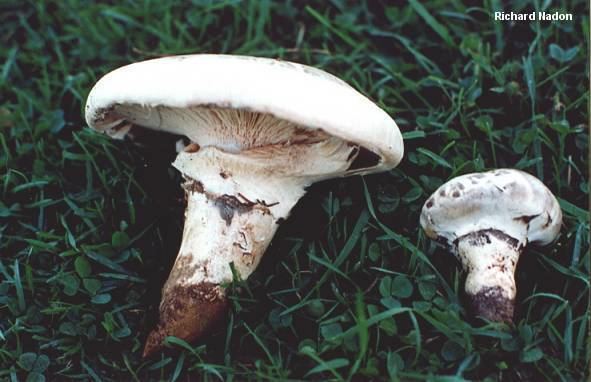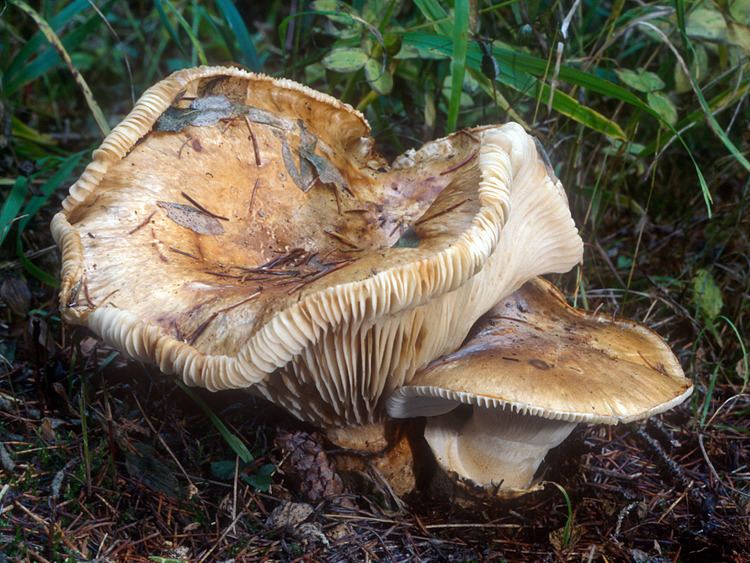Kingdom Fungi Class Agaricomycetes | Division Basidiomycota Order Agaricales Rank Genus | |
 | ||
Similar Catathelasma imperiale, Callistosporium, Cantharellula, Arrhenia, Phyllotopsis | ||
Catathelasma is a genus of fungi in the Tricholomataceae family. The genus contains four species, none of which is common.
Contents

Catathelasma imperiale conoscere i funghi 14 09 2016
Description

All four species of Catathelasma are found in North America but only one (C. imperiale) is known in Europe. They are all fairly massive Tricholoma-like fungi, but are distinguished from that genus because they have decurrent gills and (at the microscopic level) because they have amyloid spores and a bilateral gill trama. They are mycorrhizal, growing on the ground under conifers, have a tough consistency, and their stems taper towards the bottom and are often partly buried in the soil. They have prominent veil remnants (two rings, or a ring and a volva).

They all tend to be found in the mountains. In Europe the single species varies in frequency from "quite rare" to "rare".
History and Naming

The genus Catathelasma was defined by Ruth Ellen Harrison Lovejoy in 1910 based on the type species C. evanescens, which she described as a new species at the same time. In her description she says

The ring and volva, together with the very decided decurrent gills (upon which character the generic name is based), are telling characteristics of this genus of the Leucosporae.

According to Genaust's etymological dictionary of botanical names, "Catathelasma" comes from Ancient Greek words "kata" (κατά - downwards) and "thelasma" (θήλασμα - meaning "the act of suckling"). He says that the reason for this construction is unclear, but suggests that the author is comparing the shape made by the gills running down the stem with a teat stretched out during suckling. "Decurrent" means "running down the stem" and another possible connection with Lovejoy's description is that "katatheo" (καταθέω) means "I run down". However it is difficult to see how that could logically give rise to the noun "Catathelasma".
The earlier history of this group of mushrooms took place in Europe. The only European species of the genus was first described in 1845 by Fries under the name Agaricus imperialis. In 1872 Quélet classified it within Armillaria and in 1922 the Austrian botanist Günther Beck von Mannagetta und Lerchenau invented for this single species the separate genus Biannularia, a name which is still encountered in the literature. For a time Catathelasma and Biannularia were regarded as separate (though closely related) genera, as for instance in a 1936 paper by Rolf Singer. Later Singer united the genus using Lovejoy's name.
